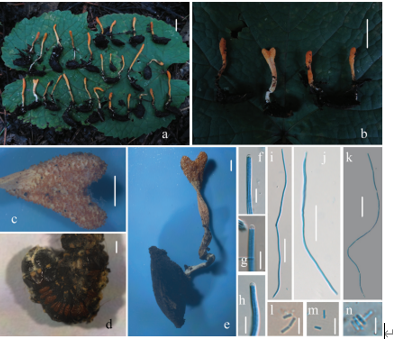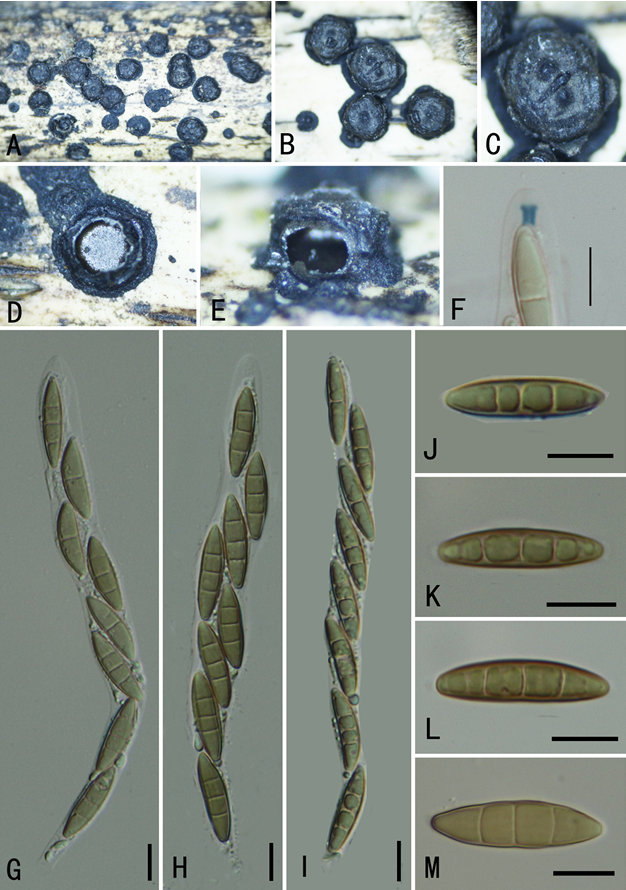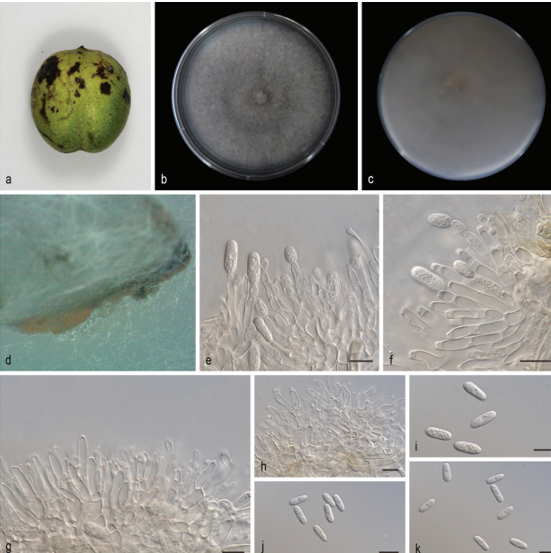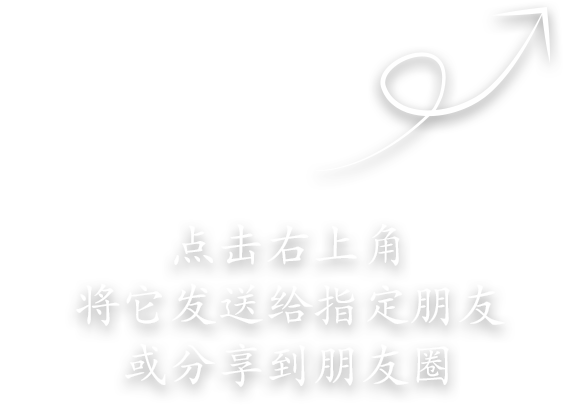Coryneum sinense C.M. Tian, Voglmayr & N. Jiang 2020
MycoBank MB824595.
Holotype: CHINA. SHAANXI PROVINCE: Shangluo City, Niubeiliang Reserve, 33°50′08.59″N, 109° 18′57.36″E, 2208 m asl, on branches of Quercus serrata, N. Jiang, 7 Jul 2017 (holotype BJFC-S1421). Ex-type culture: CFCC 52452.
Morphological description
Sexual morph: Not observed.
Asexual morph: Conidiomata acervular, 0.5–2.5 mm wide, 0.3–1.5 mm high (x = 1.4 × 0.8 mm, n = 20), solitary, erumpent through outer periderm layers of host, scattered, surface tissues above slightly domed. Conidiophores 40–100 μm long, 4–7 μm wide (x = 75 × 6 μm, n = 20), unbranched, cylindrical, septate, hyaline at apex, pale brown at base. Conidiogenous cells holoblastic, integrated, indeterminate, cylindrical, expanding toward apices, hyaline to pale brown, smooth, with 0–1 percurrent extensions. Conidia (50–)57–65(–76) × (13–)13.5– 15(–17) μm, L/W = (3.3–)3.4–5.1(–5.9) (n = 50), slightly curved or not, broadly fusiform to clavate, dark brown, smooth-walled, 5–7-distoseptate, apical cell with a hyaline tip, truncate and black at base.
Culture characters: On PDA at 25 C, colonies growing slowly and symmetrically, reaching 50 mm diam within 30 d, becoming cinereous to dark gray in color with scant cottony aerial mycelium, asexual morphs developed after 40 d.
Habitat: On branches of Quercus serrata.
Distribution: In China.
GenBank Accession: ITS : MH683553;28S: MH683561; TEF1α: MH685733; RPB2:MH685725
Notes: Species biodiversity of Coryneum is highest on the host genus Quercus. Muthumary and Sutton (1986) summarized eight species occurring on oak branches and published a key to Coryneum species on Quercus. Coryneum sinense differs from C. arausiacum, C. depressum, C. elevatum, C. japonicum, C. megaspermum, C. megaspermum var. cylindricum, C. neesii, C. umbonatum, and C. quercinum by unbranched conidiophores. In addition, conidial size and the number of distosepta also distinguish these species well (TABLE 1).
Reference: Ning Jiang a, Hermann Voglmayr b, and Chengming Tian a

Morphology of Coryneum sinense from Quercus serrata (BJFC-S1421, holotype). A. B. Conidiomata on natural substrate in surface view. C. Transverse section through conidioma. D. Longitudinal section through conidioma. E, F. Conidiophores. G–J. Conidia. Bars: A–D = 0.5 mm; E–J = 10 μm.









